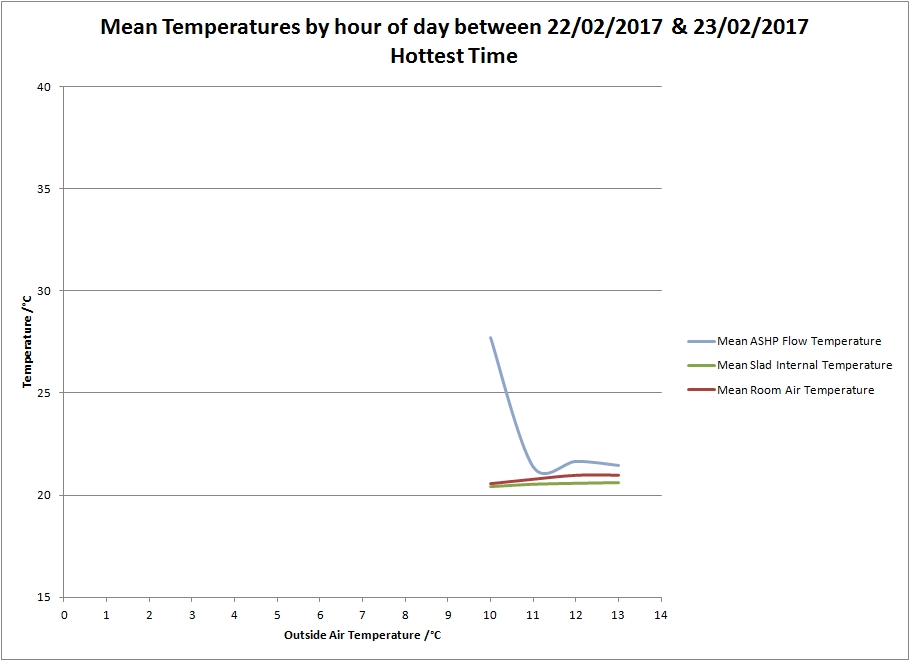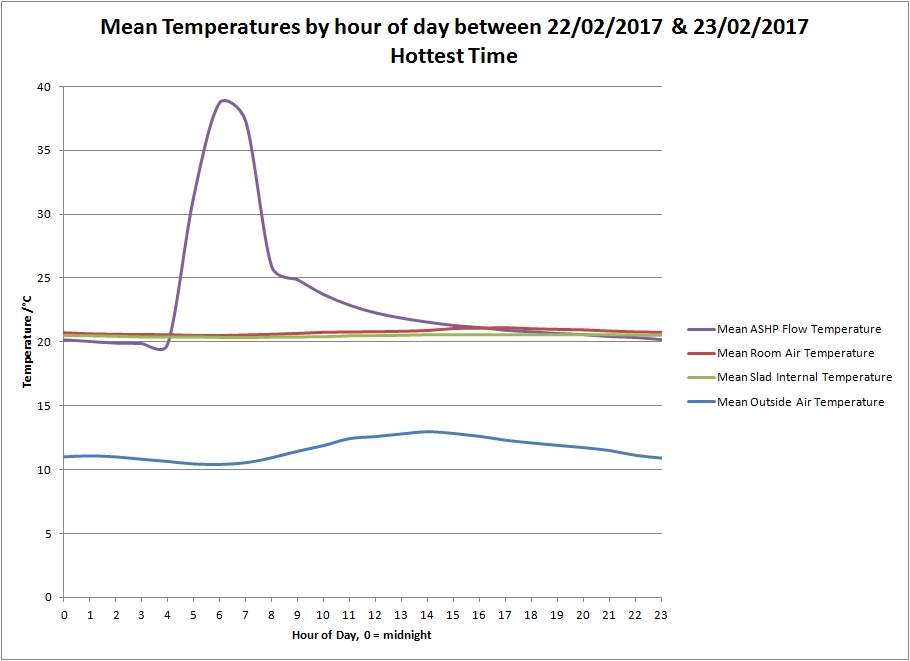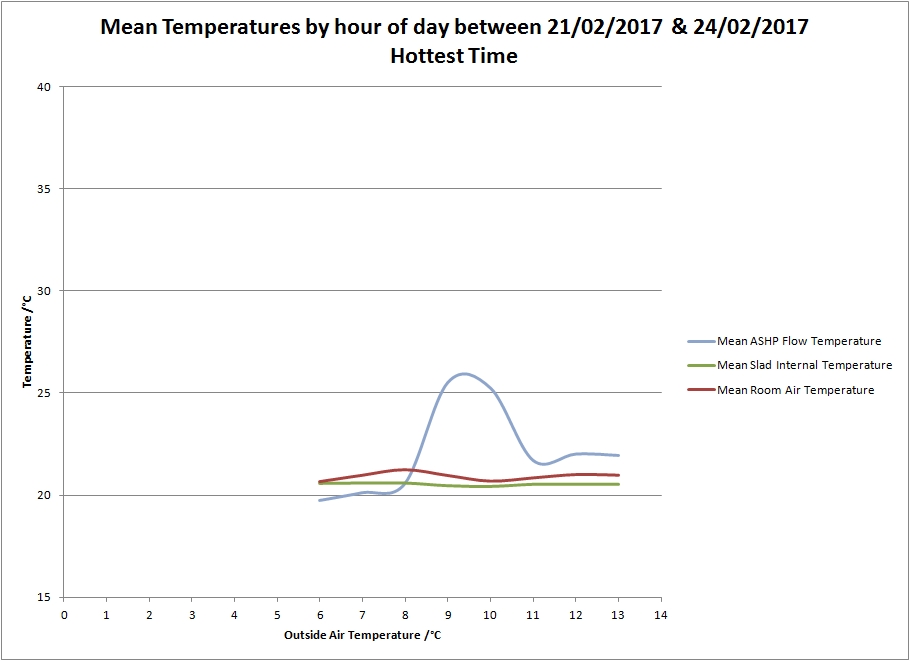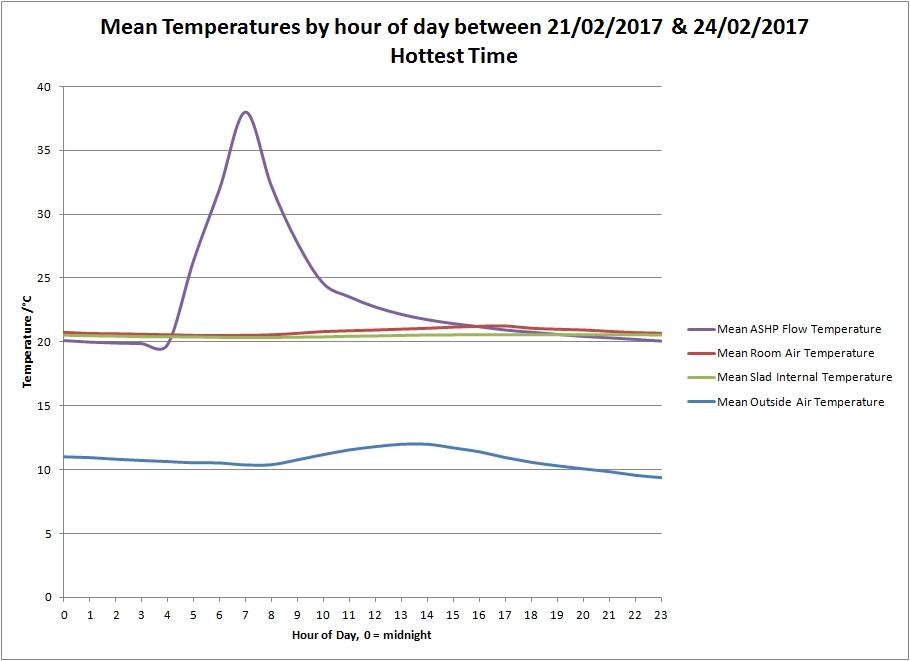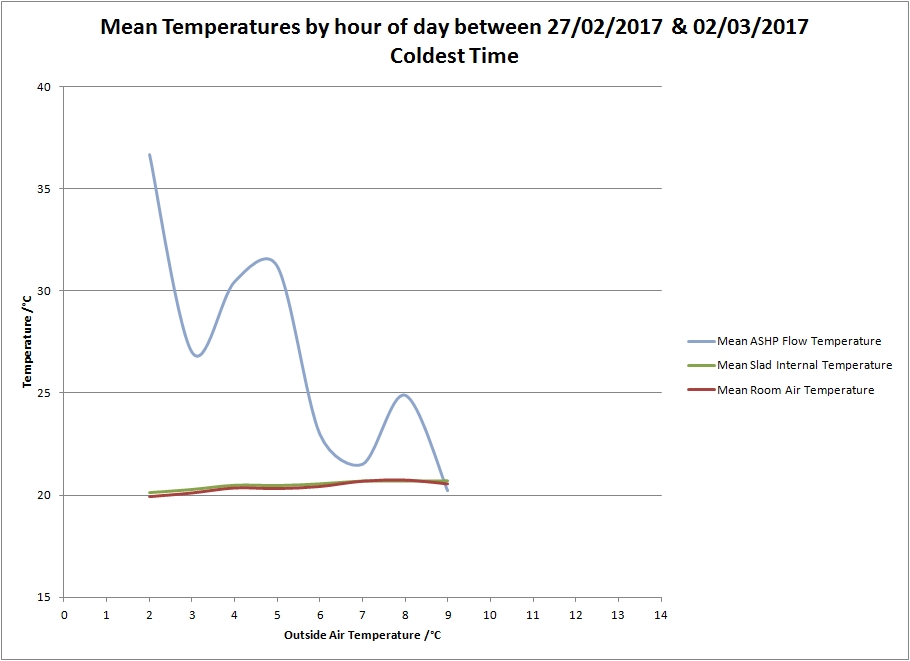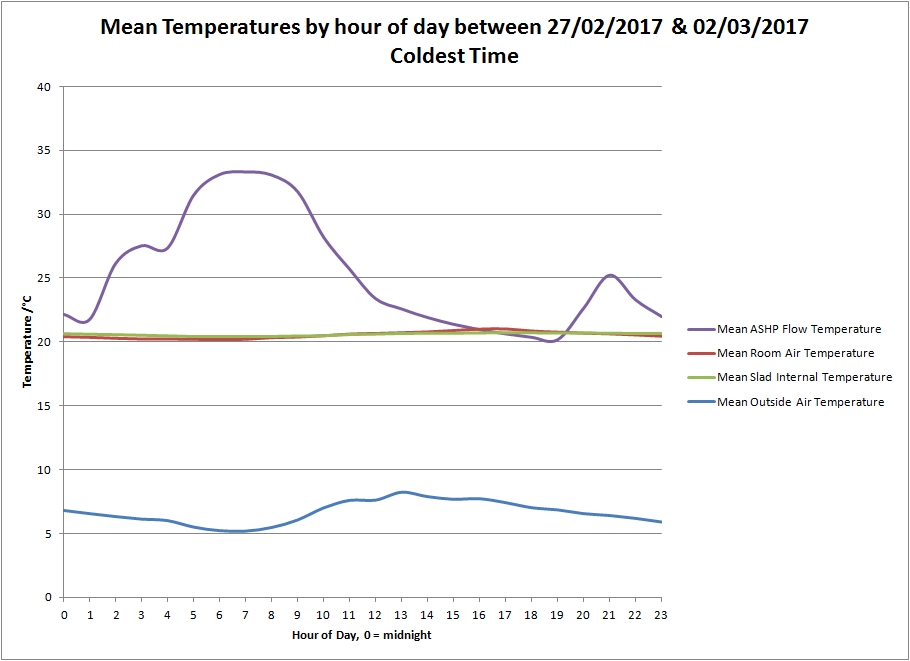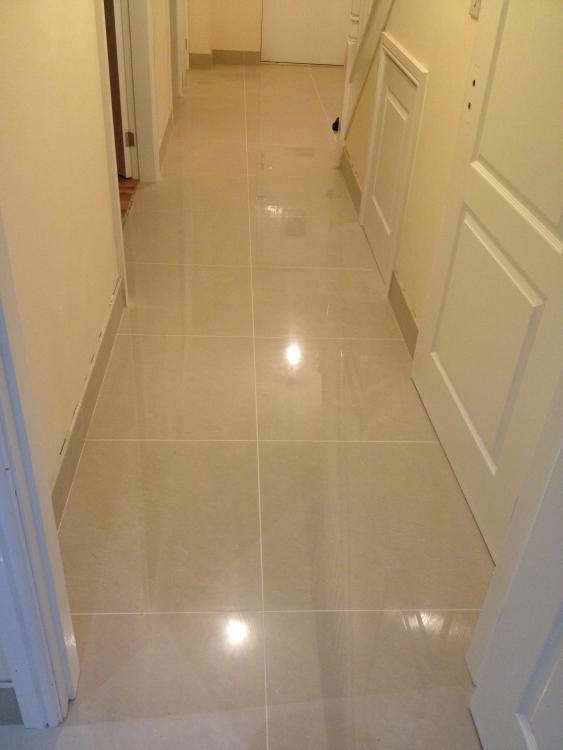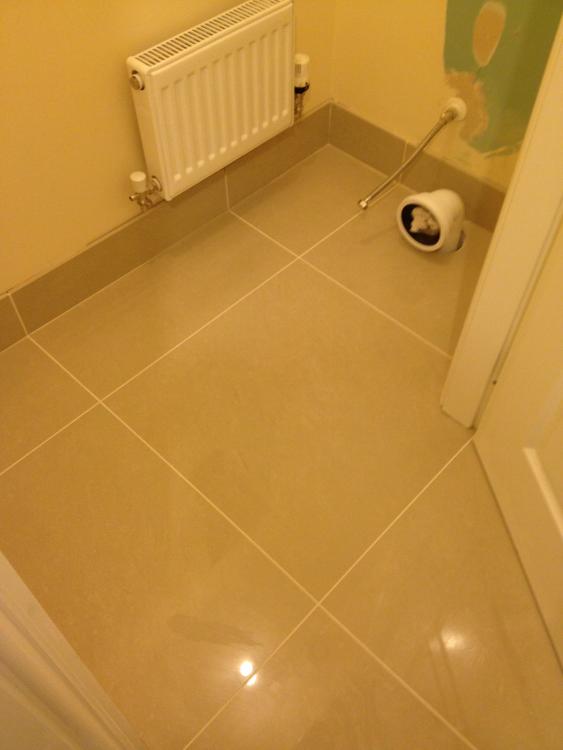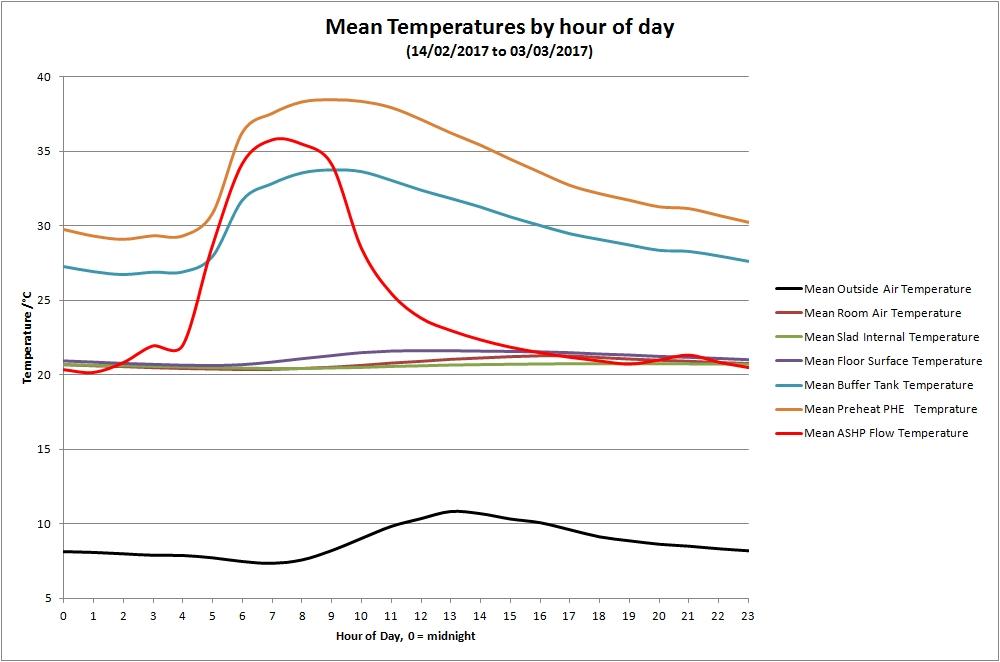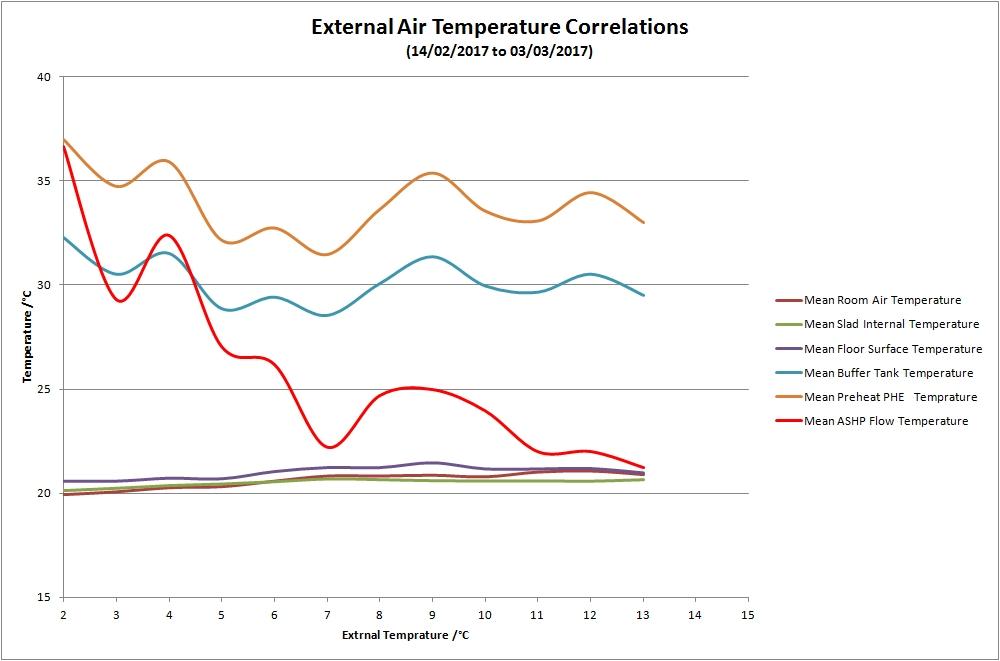Leaderboard
Popular Content
Showing content with the highest reputation on 03/06/17 in all areas
-
So we have been in the house about 5 months now and though I'd share a bit about how we are controlling the heating. As a recap, we have a MBC build house and slab, not the twin wall all pumped cellulose version but slightly less insulating and costly. Our wall makeup from outside to inside is: 20mm larch hit and miss cladding or Pavex on render board. 50mm battens Some sort of black membrane 9mm OSB 140mm stubs filled with 150mm Warmcell Airtight membrane 50mm PIR insulation 35mm battens 12mm plaster board Roof is: Evalon VSK single membrane 9mm OSB 25mm batten Non tenting membrane 18mm OSB 300mm I hoisted filled with cellulose insulation. Airtight membrane Battens to create 100mm service cavity 12.5mm plasterboard Floor is: 300mm polystyrene insulation 100mm concrete with UFH pipes imbedding in it. Heating controls So I thought I had found an off the shelf thermostat with a floor sensor from Wunda, but it turns out that the floor sensor is there to limit the screed temperature and somehow the one I have doesn't work as it can't 'see' it even though it's a wired connection. Turns out the thermostat has a sensor on it, whole whole house is being controlled from one air sensor in the open plan living room about 1.5m off the ground. This is set to be 24c (prob a couple of degrees above actual temp due to an offset function in programmer) during the day and 21 overnight so it doesn't call for heat. UFH setup I have a gas combi boiler heating a 70l buffer store, set up so that the boiler is set to keep this store at a certain temperature - currently about 35c. It is set to do this all the time as I haven't got round (and prob won't as set up seems to work) to replacing the duff manual timer on the boiler. Tank is double sprayed and has about 100mm on insulation on it. A pump feeds water to the UFH circuits and is activated by the thermostat in the open plan rooms, there is a bypass in case the UFH circuit thermostat (looks like a TRV on a radiator) is closed. There is also a NC (normally closed) valve on the return side of the UFH manifold, this too is connected to the room thermostat. The pump at the buffer was not in original design and this was the mechanism to allow the buffer water into the UFH circuits - but plumber said pump on manifold wasn't 'sucking' water from the buffer, just pumping it round the circuits. So pump at buffer was added as a quick fix. Flow rate on the 6 UFH circuits all set the same at about 2l/min (and due to someone losing a piece of paper I have no idea which circuit goes were) and both pumps set to lowest setting. Pump on UFH was all all the time but now off 6 hrs over night, the 2hrs first thing in the morning and then off 30mins then on 30 mins for rest of day. I find the temperature on the TRV set to about 30c and find that the return temperature is always about 5c less, but have only tested that from about 28c - 35c on the feed side. So far have found that works great, house nice steady temperature, I were a t-shirt and if boys (7&4) are running about they have to strip off their tops, so prob could go down a bit, but after having 8 winters in a detached solid walked house which was like a fridge I'm liking this. Have noticed the last couple of weeks that it sometimes getting a bit warm, our living room faces north so don't get sun there but bedrooms face SW so they can get warm, but hoping when sun gets higher this won't be as much as an issue as we have fairly deep waves (300mm). Been sending gas and electric meter readings off monthly to see if all this planning is working and for Nov - Jan gas was about £30 and Elec £50 a month. Feb was £28 and £48. That is with 2/3 adults and 2 kids. Be interesting to see what they are once I turn off the pumps and turn boiler to summer mode, would really like to see what the heating cost per month is.2 points
-
Use the Knauf ones ..! They are coated not to rust and cut through the board without drilling. You risk shearing a st/st one unless it's top quality. They only get put in just flush with the surface of the board anyway - not like PB where you want them to pull in slightly.2 points
-
Not sure if this has been mentioned before, but here is a house, 3D printed in 24 hours1 point
-
The foil would only get corroded by concrete, anyway, so there seems no point in having it if it's in contact with anything with cement in.1 point
-
Same here, the economics just don't add up. One issue worth looking very, very carefully at is the battery warranty. I haven't read the small print for the Tesla system, but the 8 year warranty on the lithium ion battery in my car doesn't cover "normal range reduction as a result of battery ageing". I believe that the Nissan Leaf battery warranty has a similar limitation. This means that your battery capacity will start to reduce gradually from the day it's installed, but the reduction in capacity may not be covered by the warranty. In the case of my car I've been told that a 20% capacity reduction would not be considered grounds for a warranty claim, but I've no idea what the policy is for other suppliers. I may well fit a semi-off-grid system in the future, as much for the fun of designing and building it as anything else, and as a way of providing a bit of a buffer for power cuts. I'm not kidding myself that it will make economic sense, even though a DIY system would cost a fair bit less than a ready built one. My inclination is to fit some big NiFe cells, as they have a life of at least 30 to 40 years, probably more, so at least the battery would probably recover its capital cost, perhaps even in my remaining lifetime..............1 point
-
I'd be inclined to dump it, if it were me. They do cause a reduction in flow rate that was quite noticeable when I took ours out. I put it in originally because we were running the borehole pump at around 4.5 bar, but left it there, set to 3.5 bar when I reduced the water treatment plant operating pressure. TBH. I didn't notice the flow reduction it was creating until I removed it, when I took out the thermal store and fitted the Sunamp PV, it was the improvement in flow rate after I removed it that was noticeable. As an aside, I've found that fitting flow rate reducers on all the taps, except the bath, has not only made those taps more user-friendly (less splashing and easier flow control) but it has also reduced the impact on the shower flow rate when a tap is turned on to the point where it's virtually undetectable. It wasn't my choice to fit these flow restrictors, it was a building regs requirement to comply with the water usage bit of the regs, but if I was starting again I'd fit them as a matter of course to all the non-flow critical taps..1 point
-
1 point
-
Surely he has just painted that parking space himself. I can't see how an officially sanctioned parking space would extend from the road onto the pavement. Indeed now seeing that number 14 has a driveway and looking at the original map showing space in front of number 10 and number 16 the whole situation looks very suspicious. I am guessing that all of these houses have driveways. The council does not paint bays in front of people's houses on the public road that are their own personal parking (at least certainly not here). People do not own parking on the public highway. Fair enough if it was some kind of separate parking area, but it doesn't appear to be. Around here what the council does is paint single white lines across the front of driveways to dissuade people parking in front of them. Surely the council only paint individual spaces if they are charging for parking. Depends on how unpopular you want to be, but I suspect that if you check with the highways department they are indeed all "rogue" spaces.1 point
-
Right, a few more pictures. I notice that the time between maximum ASHP Flow temperature and there it crosses the slab temp plot on the cooling cycle is pretty consistent at about 8 hours. Not sure what these plots really show, other than you could shift the time that the ASHP is working to take advantage of the PV without affecting the house temperature unduly (less than a °C I would think). This would take away for car charging time, which is probably a greater cash saving. The charts, are for the hottest day and then including the two days either side, then the same for the coldest time.1 point
-
One thing that jumps out at me about that is that maybe they say "low energy" because it is vague, while Ph does actually have targets that have to be met. Therefore they can absolve themselves if things don't go right, pushing the risk on to you... Note there are other proper low energy standards, like the AECB Silver. Others may provide other examples. If you don't want to go full Ph you could target those instead, and ask your supplier to meet them or £££.1 point
-
Doesn't really matter if it was the tiles being out or the floor being out or the tiler being less than ok you have employed a PM to manger your job and it is up to him to oversee the job. You need to tell him you aren't happy with the work and want it sorted ASAP. He lined the tiler up so it's his responsibility to make sure the end product is good which going by the pics it's not. So tell your PM that it needs ripped up and relaid. Don't except a few tiles getting replaced. The whole floor has to come up and it won't be at your expense.1 point
-
Just to echo what everyone else has said, this IS the fault of the tiler. Full stop. I have done a fair bit of tiling on a DIY basis but wouldn't not even begin to consider myself an expert. The picture below is the garage floor at our place which I laid. The builder that put the concrete slab down did so with a yard broom and length of 4x2! Frankly it looked horrendous. But, it actually wasn't out by more than 10-15mm across various points but just generally very rough. As others have said it's just a case of assessing everything ahead of the job. i wouldn't consider the floor below a "snooker table" but it's flat with equal grout lines. What's more disappointing is that you've paid a PM who should prevent you having this pain.1 point
-
FWIW, our tiler spent around 40 minutes checking the floor levels before starting, as he wanted to be sure that he started at the highest point, and where the lowest point was, and how much lower it was. He reckoned that he could make up for a few mm here and there with the adhesive OK, but it turned out that the slab was dead level and flat everywhere. He did warn us right at the start, when he gave us the price for the job, that if there was a problem he'd have to level the slab with levelling compound before he could start laying the stone. The adhesive thickness allowance was 6mm for estimating quantity, IIRC, but we ended up using a lot less, as our slab was dead flat and level, having been power floated when laid. We ended up with around half the adhesive I'd bought left over. A lot of self builders have to buy the materials, in order to be able to claim the VAT back, as a lot of trades people aren't VAT registered, as in our case, and if doing this there needs to be a clear understanding as to whether or not the person using those materials is happy wth them, before they start work, not afterwards. As above, there's no excuse here at all. If there was a problem with the tiles then the tiler should have raised it before laying them, not just carried on. Likewise, it's the PMs responsibility to make sure that subcontractors do a decent job, even if they happen to be friends or relatives.1 point
-
Actually I think you can. I know a good tiler, and if the floor is not level, he will tell you, and tell you what needs to be done to make it level before he starts tiling.1 point
-
Perimeter insulation can be 25mm kingspan / other rigid insulation, but for a thin dry screed you'll need to have some other form of expansion skirting ( applied directly in front of the 25mm upstand ). Sonething like this is what I use. Shop around for best price . Liquid screed has a lot of 'after lay' preparation and mechanical cleaning that's needs doing to it before ANYTHING will stick to it ( including primers ). I'd stick with the dry screed TBH, but there are liquid screeds of varying performance based on how much you want to spend. With a <70mm dry screed you need to ensure that you observe expansion gaps at the door thresholds so talk to both the screed layer and Ufh installer accordingly about fitting some of these type of things.1 point
-
Absolute nonsense. A tiler is bloody well 1000% responsible for levelling and laying a flat floor, REGARDLESS of the state of the slab. If the slab was that far out, which I doubt it was, then the tiler should have ascertained that BEFORE OPENING A BAG OF ADHESIVE !!! At that point they should have advised that the slab needs feathering with latex and should have done so prior to laying Ill bet my left nut that this guy has laid the tiles worse than the slab was in the first place. The skirting / up stands should have all the vertical grout lines lined up with the grout lines in the floor, unless it's a different tile. This was over my mates brand new liquid screeded floor in his Persimmon home, and in the kitchen I had to use about 9 bags of self leveller . Have a butchers at that lot. 600mm x 600mm rectified edge porcelain, a rough as toast screed, and you could play snooker on it after I left. There is no excuse.1 point
-
Dancing to my own tune a bit but I've decided to eschew the Geberit wall fixings and instead use my own concoction. M10 studs Fischer resin anchored 100mm into the 9" block wall then studding connectors. Frame will thus be fixed 2 at the base, 2 up each side (into the studs)and these two into the wall behind. Going to line the old doorway behind with some 25mm EPS all the way up to keep things tidy:1 point
-
Right, have had a little play this morning and produced two charts. One is the correlation between the invariant of external air temperature and the other against time. I picked these two because we have no control over them and can therefore be used to both correlate and draw implications. There is really not enough data to draw very precise data for the long term, but as the floor surface, slab internal and room air temperature are amazingly stable (basically within the accuracy of the sensors) the 11°C external temperature swings that have recently happened are a good indicator of overall performance. As Jeremy a already said, the ASHP is coming on at around 3AM for about 3 hours. This fits in with the coldest part of the day, though may not be the best time to start heating. That depends on lifestyle and how you like your house heated (It would suit me as I like a warm evening). The slab, on average, has the highest temperature at about 2PM until 1AM. Room air temperature peaks at about 4PM. On the Correlations, everything is pretty flat except the Mean ASHP Flow Temperatures. This is to be expected because if the outside air is warmer, the ASHP will be working less often, rather than delivering a lower flow temperature. This will force the mean flow temperature downwards. I shall try and have a better look later, but life got in my way this morning and only just managed to get home again to pick this up.1 point





